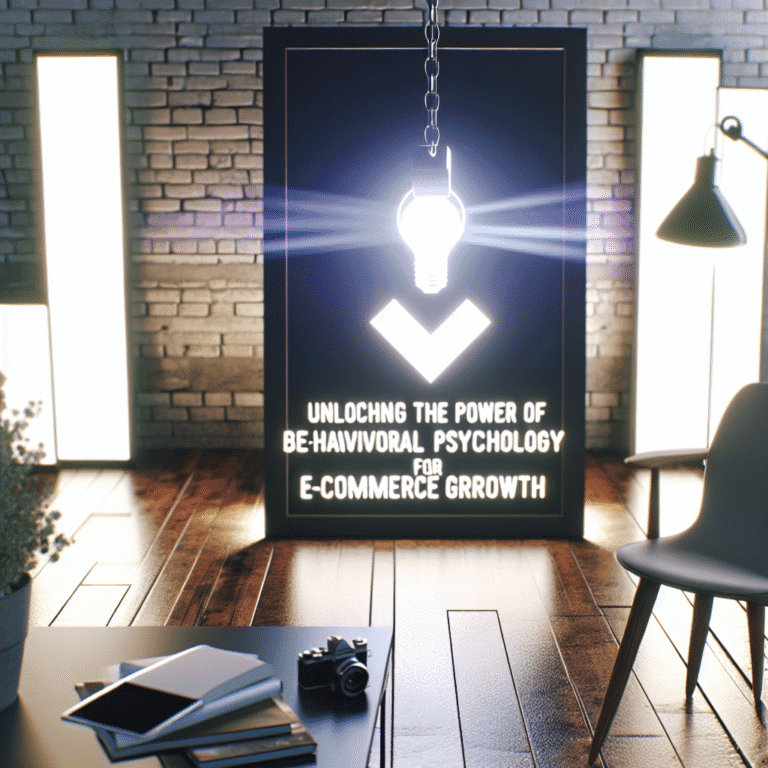Online Shopping Needs More Than Pretty Pictures
Your website's slick and fancy, your products are top-notch, yet people leave without buying. Why's that? It might be because your site assumes that shoppers act like logical robots. But reality is, they're more like squirrels chasing shiny things. They're emotional and easily distracted. To get them clicking "buy now", you need to speak to their human side, not just their rational mind.
E-commerce giants like Amazon aren't the best just because of fancy products. They win because:
- They make returns simple, so you're not worried about regretting a purchase
- They suggest what you might like, so you don’t have to think too hard
- They use reviews to show you others trust them before you pay
As Dr. Kate Nightingale, a consumer psychologist, wisely notes: “We are emotional, social beings.” Make the decision feel safe and you'll see results.
Keep It Simple, Silly
When everything is easy to find, our brains give a nod of approval. So, what should you do?
- Ditch the clutter. An easy-to-look-at page is less tiring.
- Don't overwhelm with options. Too many choices can freeze the decision.
- Use space wisely. Let eyes rest on important bits.
When it's straightforward, people trust it more.
Fear of Missing Out Works Wonders
People would rather not lose something than gain something extra. It’s science—that’s what Kahneman & Tversky taught us.
- Say “Only 3 left” instead of “50 sold today”.
- Offer limited-time deals that vanish soon.
- Remind folks what happens if they don’t act.
Frame it right and people will hit buy to avoid regret.
Let Others Do the Talking
No one likes to make a mistake. We look to others to guide us. That’s why social proof matters.
- Place real reviews where people can see them.
- Use things like “427 bought today” to grab attention.
- Live updates like “Rashida in Bristol just ordered” cause a tiny bit of FOMO.
Folks want assurance they're doing the right thing. Make it loud and clear.
Make The Price Look Good
We’re not always sure what something should cost. So, we look at what’s around.
- Start with a pricier item so the others seem like a deal.
- Offer tiers like Basic, Pro, Premium to nudge towards the middle.
- A decoy higher-priced item can make everything else seem reasonable.
Anchors set expectations, making prices seem more appealing.
Little Wins Lead to Big Wins
If you get someone to agree to something small, they’re likely to follow with a bigger yes.
- Let them save an item to a wishlist.
- Show progress in checkout to keep them going.
- Ask for an email after they’ve shown interest.
Small steps can lead to completed purchases.
Give Before You Receive
People like to return favours. Give them something and they might just repay you with a purchase.
- Offer something fun like a style quiz or a little discount.
- Personalise rewards. Make them feel special.
This way, people might feel a nudge to give back to you.
Create Urgency With Reality
A ticking clock can get people moving—if it’s genuine.
- Show real scarcity. “Only 15 made” translates differently than fake “limited time offers”.
- Be subtle about it. A soft reminder that “This size sells fast” can work wonders.
When there’s doubt about availability, value skyrockets.
Help Them Along Their Journey
If someone thinks they’re halfway done, they’re more likely to finish.
- Messages like “Only 2 steps left” encourage completion.
- Start a loyalty card with points to drive redemption.
- Let them earn rewards for doing long tasks.
This isn't trickery. It's motivation by showing progress.
Too Many Choices, Too Little Time
More options don’t always mean better sales. Often, it just creates chaos.
- Curate selections, being like a helpful shopkeeper.
- Offer personalised filters and guide choices.
- Simple suggestions can steer decisions.
If it’s easy to pick, it’s more likely they’ll walk away with something.
Familiarity Feels Safe
What’s familiar is trusted. It’s not just a branding buzzword.
- Use consistent designs and button styles.
- Keep calls to action identical across the site.
- Repeat key messages—familiarity builds trust.
The more familiar it feels, the easier it is to keep clicking buy.
Sometimes, a Bit of Work is Good
A smooth sale is great, but a little effort can add value.
Cambridge researchers found people felt more committed when they had to work for something. Effort can signal worth.
Think about:
- A waitlist over a discount
- A bespoke onboarding process over quick checkouts
- A little form to join, not just a quick click
Sometimes it’s the small challenges that make things feel worthwhile. Loyalty follows.
Why a Wait Beats a Discount
Here's a story for you: an eyewear brand tried two strategies for items out of stock:
- A 20% discount when available again
- A waitlist for first dibs
The waitlist got 29% more interest. Same specs, different approach. Being less accessible made people more eager.
Closing Thoughts
Crafting a sale isn't just about dressing things up or changing a button colour. It's about understanding and tapping into how people think and feel. Try a few of these psychological nudges. See what changes. It’s about guiding shoppers, not coercing them. In a world full of distractions, the experience that feels easiest and most rewarding will always win.
Further Reading
For the curious among you:
- Prospect Theory – Kahneman & Tversky (1979)
- Foot-in-the-door Technique on CXL
- Checkout UX Research by Baymard Institute
- When Choice is Demotivating – Harvard Business Review
Try these tricks and share your wins. After all, in ecommerce, psychology is your best mate and best product.





